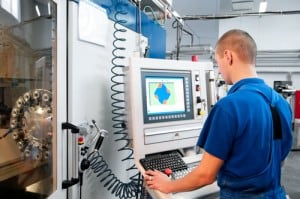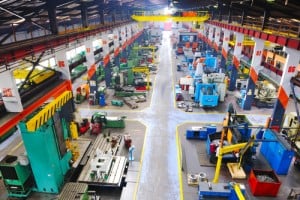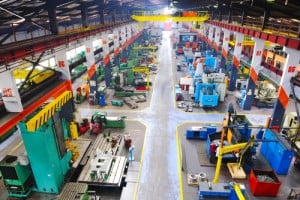The Foundation Upon Which Batches and Recipes are Built
In a recent discussion, I mentioned the S88 standard on Batch Control. I referenced it with regards to recipes and specifically talked about the management and dissemination of recipes. I got a lot of feedback on all that and I wanted to say how much I appreciate getting comments and questions.
 If you’ve looked at the S88 standard at all you know there’s a lot in there. I mean a lot of information that is very powerful. I can say without a doubt that a lot of people spent their blood, sweat, and tears in learning lessons over many, many years that were all incorporated into the ideas in the S88 standard.
If you’ve looked at the S88 standard at all you know there’s a lot in there. I mean a lot of information that is very powerful. I can say without a doubt that a lot of people spent their blood, sweat, and tears in learning lessons over many, many years that were all incorporated into the ideas in the S88 standard.
One section of the S88 standard that everyone seems to have overlooked completely though is the section on the equipment hierarchy. This section is actually called the Physical Model and it comes before most of the discussion on batch control and even before the discussion of recipes.
But, what’s amazing is that most people, even people that have products that they claim are “S88 compliant” have never even seen the physical model and despite their claims about being “S88 compliant” don’t have anything at all that looks like the physical model defined in the standard.
Let me tell you what the physical model is all about. It is an attempt to provide a standard way to define a hierarchy of physical components, from the enterprise all the way down to the individual equipment, that forms the basis for all the other discussions on batch control, recipes, and so on.
In short, it is literally the foundation upon which all the higher level concepts of batch control, batch execution, recipe management, process execution, and so on are all built upon. Without this foundation, I don’t know how in the world anyone could talk about batches and recipes. Here’s the details summarized directly from the standard in a simple hierarchical form:
Enterprise – the entire enterprise or an individual business unit. This is the highest level of the hierarchy. Enterprises contain one or more sites. Corresponds to the notion of the General Recipe.
Site – an individual site within an enterprise. Normally a site where manufacturing is performed. Sites contain one or more areas. Corresponds to the notion of the site recipe.
Area – an area within a site where manufacturing is performed. Used as a way to organize or segregate the site. Areas contain one or more process cells.
Process Cell – an individual process cell where manufacturing is performed. A process cell contains one or more units. A process cell usually corresponds to the notion of a Master Recipe and usually executes an individual Control Recipe. Sometimes Process Cell may correspond to lines.
Unit – a group of equipment that is part of a process cell that works in concert to perform manufacturing. A unit contains one or more pieces of equipment.
Equipment – an individual piece of equipment in a unit in a process cell. Usually the smallest division that is maintained in the hierarchy.
Now that you’ve seen this hierarchy, let me get back to my point. (By the way, I wanted to include the definition of this hierarchy here because you really wouldn’t believe how many people have never, ever seen this before and it’s right in the S88 standard.)
Again, it’s the foundation on which all the other concepts of batches and recipes are all built upon. How can you talk about a Site Recipe if you have no definition at all of what a Site is? How can you talk about the Process Cell where a Master Recipe is supposed to execute if you have no definition of the Process Cell? The physical model is foundation to all of that.
Also, the physical model is independent of the processes or batches or recipes that are used. Most people seem to miss this and a lot of ERP and MES packages out there really muddle this up. They mix physical components like process cells together with processes to make a real mess.
But, I think you should see the point of this independence. You should be able to define the physical process cell and then define a separate list of processes that can be executed on that process cell. You should be able to define the process cell and then define a separate list of Master Recipes which can be executed on that process cell. Likewise you can define all this stuff and they say that this process cell can execute these processes and these Master Recipes but this other process cell can execute a different list of processes and recipes.
So you can map between the physical model and the processes and recipes without getting them all muddled together and without duplicating information all over the place.
And, the physical model gives you all kinds of other benefits when it comes to defining all sorts of things such as data collection points, QA points, test points, material input and output points, and so on. All kinds of things that are linked to the physical model but not necessarily to the process definition or even the individual Master Recipe.
The bottom line is that the physical model is the most foundational part of the S88 standard and therefore, in my opinion, the most important. Without a doubt the most important.
But, it’s also the part of the S88 standard that’s most overlooked, the least used, the least known, and absolutely the least implemented in any solution out there in the market place.
So, take a new look at the S88 standard. Look at the section on the physical model. Think about the value of using this physical model as a foundation for everything that you’re doing with batches and recipes and most everything else.
Let me know what you think. I think you’ll find the physical model very simple yet amazingly powerful and surprisingly useful. Take a look at it and let me know what you think. Good luck!



